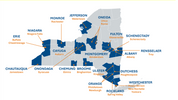Newly adopted IRS Notice 2023-30 has opened a short window during which existing Conservation Easements can adopt "safe harbor" language to correct provisions allowing for the termination of the easement or modification of its boundary lines.
Individuals creating Conservation Easements frequently include provisions to address what will happen if an unexpected event makes it impossible or impractical to continue the use of the property for conservation purposes. Similarly, some Conservations Easements allow for future modification of boundary lines in certain circumstances. In order to receive the tax benefits of creating a Conservation Easement, the easement must be perpetual. In the view of the IRS, the ability to extinguish or modify a Conservation Easement undermines the permanency of the easement created, invalidating the grounds for tax benefits.
The new Safe Harbor allows for a one time amendment of existing Conservation Easements to revise existing provisions to match up with newly approved language provided by the IRS. Among other things, the IRS language requires judicial involvement in any termination or modification of a Conservation Easement.
Importantly, the safe harbor window closes on July 24, 2023. Existing Conservation Easements should be reviewed as soon as possible to determine if a modification is needed to the existing terms, and if so, the modification should be made prior to the closing of the window, and going forward, the safe harbor language should be used whenever creating a new Conservation Easement.
Under Section 605(d)(2) of the Act, donors are allowed, but not required, to amend their deeds to include this language. Donors wanting to make the change must do so by July 24, 2023.
 unknownx500
unknownx500










